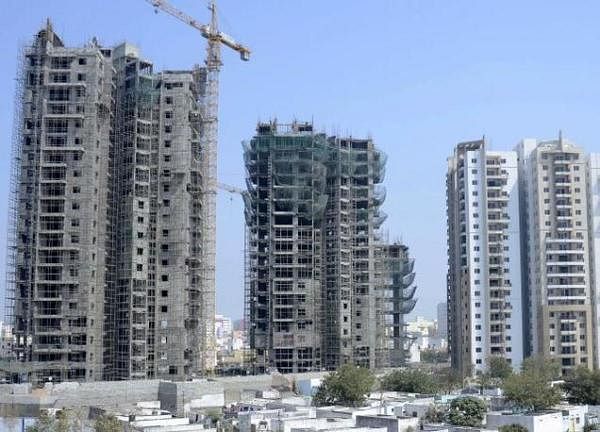
COVID-19 is essentially an urban phenomenon. It originated in the large thriving Chinese city of Wuhan and spread quickly to other cities of the world. Although originating in Asia, the geography of the pathogen’s occurrence reveals that it has primarily targeted the flourishing cities of the wealthy west, with the glamorous New York showing the maximum fatalities. In India, over 75% of the total number of positive cases have occurred in the top 35 urban agglomerations, with 13 metropolitan cities accounting for about 65% of cases.
After nearly 60 days of lockdown, as governments relax the restrictions and cities come back to life, the question that haunts city dwellers’ minds is, what will city life be like in the future? There is no doubt that all classes of people have been affected and we are confronted with new challenges. The nature of work, the mode of travel, our social relations and lifestyle, may all undergo a change. Can we learn some lessons COVID-19 has offered us and plan for a better future for our cities? Here are some takeaways.
One of the biggest gains from the lockdown was the drastic reduction in urban pollution levels. This was the result of the near absence of movement of motor vehicles on roads. So, in the interests of a clean environment and health of the people, the first priority should be to move away from an auto-dependent mobility pattern and adopt a strategy that promotes non-motorised transport. This would mean redesigning the street architecture to accommodate more bicycles and walkways. Some narrow and congested streets must be pedestrianised, like for instance, Commercial Street and Avenue Road in Bengaluru. Secondly, we must aggressively encourage the use of public transport by making it more accessible and affordable, especially for the poorer sections. Intermediate transport like autos and cabs is required to connect commuters to the last mile. For quite some time, they may have to carry a limited number of passengers and there will be no carpools. What is needed is a well-planned multi-modal transportation system with convenient connectivity to different modes of transport.
One of the most painful outcomes of the lockdown is the loss of jobs, particularly for the migrant workers who had made cities their home to earn their livelihoods, rendering a variety of services. Suffering from the loss of jobs and the loss of dignity caused by the lockdown and some inept handling by the authorities and employers, they started trekking back to their homes. This will lead to two consequences.
One, a drastic reduction in the workforce in cities seriously affecting the economy, and secondly, pressure on the rural economy to generate more employment. How many will return to their original places of work at a future date is uncertain. All this point to the need to evolve a migration policy at the city level to ensure that the workers at the bottom of the pyramid are treated as a dignified labour force who contribute substantially to the urban economy.
Job opportunities
The policy should include matters relating to their shelter needs as they move into the city, the job opportunities depending on the skills and preferences of the individuals and the safety and security of the migrant population.
As cities are major contributors to the national economy, we must plan to maximise the economic potential of urban agglomerations and other promising towns. The aim must be to promote local economic growth and create employment. The time is now appropriate to initiate action to decongest large cities by shifting some businesses and offices to smaller cities and towns. It is, however, essential to build infrastructure in and around the new areas where certain activities are proposed to be shifted or new activities created.
Urban health has now emerged as a key issue in managing cities. While scientists may be grappling to find a new vaccine for the present virus, we never know when a new pandemic may break out. Our health system must be equipped to deal with new types of diseases from hitherto unknown sources.
A new concept called ‘One Health’ which aims to integrate the management of the health of wildlife, livestock and humans has been advocated by the One Health Institute at the University of California, Davis. It seeks to regularly check for possible infections from livestock and wild animals that are farmed and traded and high human risk populations. We may consider adopting such an approach.
In the light, of the new developments, we need to review the prevailing urban planning practices. The traditional land use and infrastructure development planning must yield place to more comprehensive planning that prioritises health, environment, employment and equity. The recent cyclone Amphan that hit the coastal areas of West Bengal and Odisha, serves as a warning to the authorities and the people to be prepared to deal with more than one disaster at a time.
Urban areas will have to be designed and planned to survive the effects of climate change and disasters. Architects will have to redesign existing buildings to provide for more ventilation and natural light and reduce the use of air conditioners. Builders will have to rethink raising huge skyscrapers. Any city plan will have to be inclusive with space for the poor, the vulnerable and the migrant sections who are subject to the maximum stress during times of crisis.
Finally, a word about the management of lockdown in India. While we may take pride in having restricted the impact of the virus in terms of the number of cases and deaths, the credit should go in large measure to the lower levels of government - the state, district and city administrations that have borne the brunt of implementation of the guidelines. A key lesson from Covid-19, particularly to the Centre, is that greater the decentralisation, more effective will be the governance.
(The writer is former Chief Secretary, Government of Karnataka)